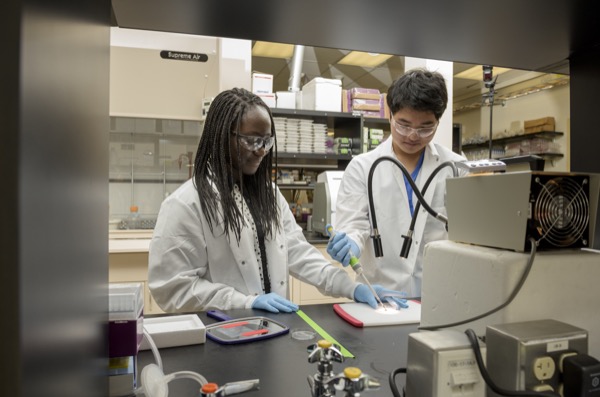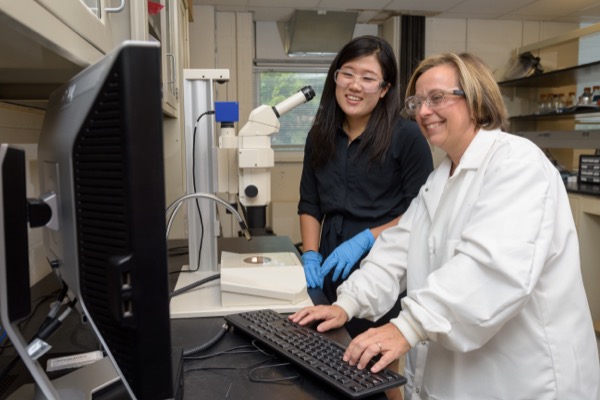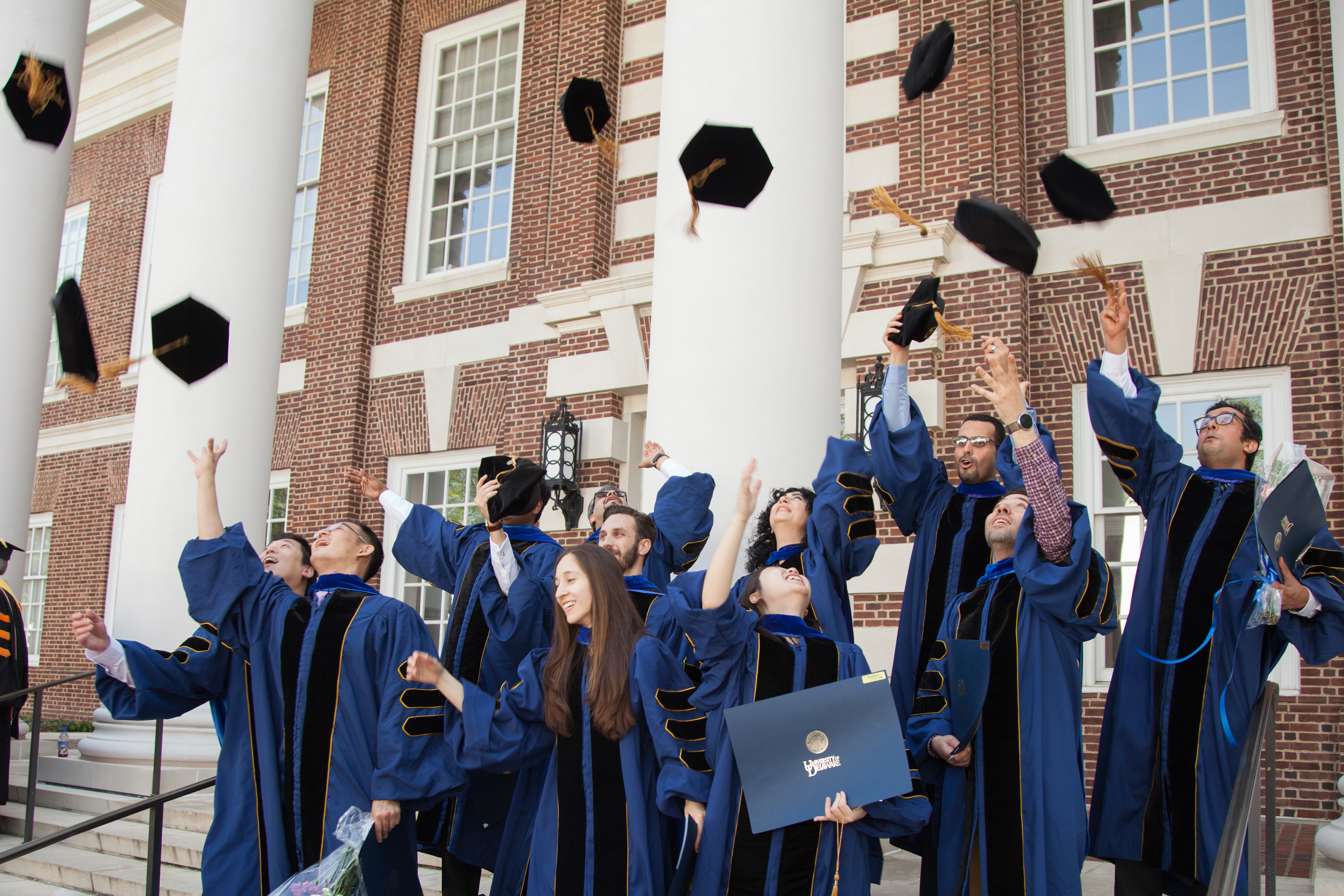


Biomedical engineering milestones
Biomedical engineering program accredited, granted departmental status
1:09 p.m., Sept. 8, 2015--The biomedical engineering (BME) program at the University of Delaware recently reached two important milestones: accreditation by ABET (Accreditation Board for Engineering and Technology) and approval for departmental status by the UD Faculty Senate.
The BME program, developed by a steering committee led by Tom Buchanan and composed of faculty from all engineering departments, was launched in 2010 with mechanical engineering’s Jill Higginson as the first director.
Campus Stories
From graduates, faculty
Doctoral hooding
In 2011, Dawn Elliott became the director and first primary faculty member. Now department chair, Elliott has continued to develop affiliated faculty appointments across the university, implement the new undergraduate program, and launch the graduate program.
“The undergraduate program has been extremely popular since the very beginning,” Elliott says. “Our incoming classes are capped at 55 students, and unfortunately we’re having to turn away outstanding applicants every year.”
As of January 2016, BME will have 11 primary faculty members, five of whom are women. The undergraduate population in the department is also well balanced, with more than 40 percent female students. “I think that the overarching purpose of biomedical applications makes the field attractive to women,” Elliott says.
Elliott credits other departments in the College of Engineering with providing the support needed to offer courses until BME built up its own faculty. These early collaborations left a legacy of cooperation and openness that continues to facilitate co-advisement of students and collaborative research.
“We’re really proud of the education program we’ve developed,” Elliott says. “Our partnership with mechanical engineering and their interdisciplinary senior design course has also led to a great pathway to innovation for our students, with our clinical immersion course leading to senior design projects and then to entrepreneurship. In addition, many of our undergraduates are conducting research with faculty across campus.”
Research in the department currently focuses on four interdisciplinary areas: musculoskeletal and neural engineering, cancer diagnosis and therapy, disease modeling, and tissue and regenerative engineering.
“Our biomedical engineering researchers have key collaborations with not only other faculty within the college, but also many in the applied sciences,” says Babatunde Ogunnaike, dean of the College of Engineering. “With affiliated faculty in BME now totaling close to 80, we truly have a village educating our students and developing new knowledge in one of the most rapidly growing areas of engineering.”
Elliott says she looks forward to having the physical infrastructure that will enable expansion of these efforts as UD competes with the best biomedical engineering departments in the nation.
“We started with a blank piece of paper five years ago, and now we have a top-notch education program, fruitful collaborations, high-impact research, and a blueprint for student entrepreneurship,” she says.
Article by Diane Kukich
Photos by Kathy F. Atkinson and Evan Krape









